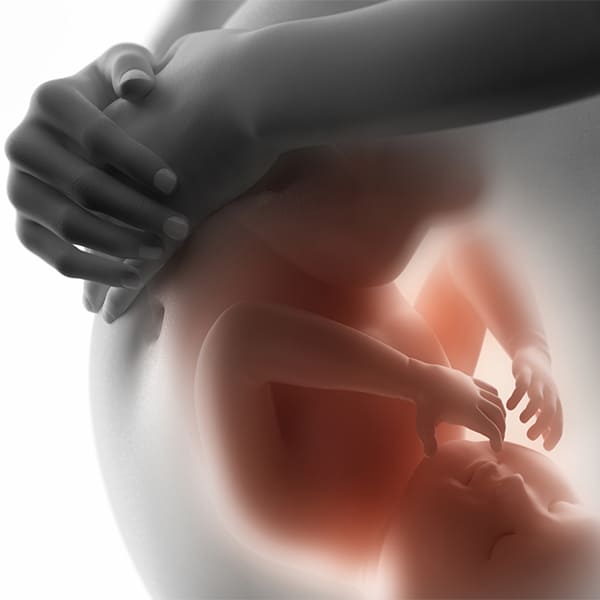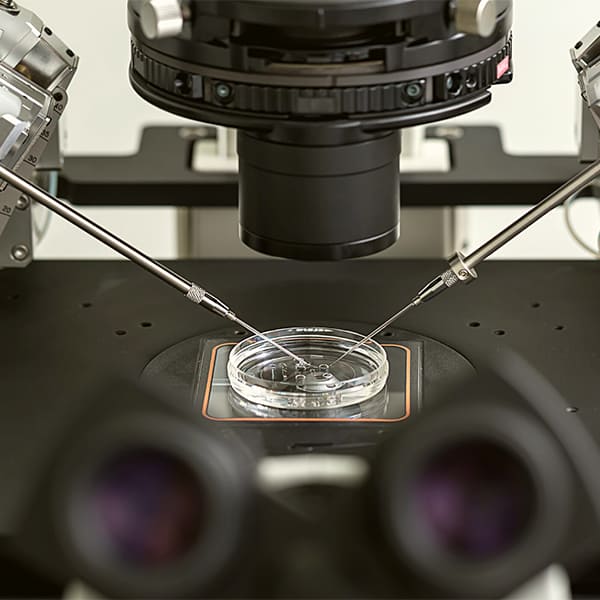- Home
- About Us
- Why BFI
- Treatments
Advanced IVF Treatment
Donor Services
Fertility Preservation
Advanced IVF Treatment
Donor Services
Fertility Preservation
- Locations
- Resources
- Contact Us
What is IVF?
In Vitro Fertilization – IVF is an assisted reproduction technique that consists of fertilizing an egg with sperm in the laboratory. Subsequently, the embryo already formed is placed inside the woman’s uterus.
IVF is short for In Vitro (outside the body) Fertilization ( fertilization of a female egg by a male sperm); this process first happened in a test tube, so it is also popularly known as a test tube baby.
IVF is a generic name for any treatment where eggs are taken out of the female body, fertilized and grown in the lab and then the resulting embryos are transferred into the uterus. As the eggs and embryos are outside the body, we can use many advanced technology and techniques to increase the success of this treatment. IVF is the only treatment in which we can put the embryos at their final destination of implantation.
Advantages of IVF
- We can know how many embryos were formed and the quality of embryos
- Select and transfer best quality embryos
- Freeze extra embryos for future use, if available
- Use advanced techniques for fertilization and increasing implantation
- Perform genetic testing on embryos, if needed
Across the world, more than 5 million healthy babies have been born with the help of IVF, and the numbers are fast rising.
In Vitro Fertilization IVF Process Step by step
There are 5 steps in IVF

- Pre-treatment evaluation
- Stimulation
- Oocyte retrieval & fertilization
- Embryo transfer
- Pregnancy test
Pre-treatment evaluation
BFI believes in a thorough evaluation of the couple BEFORE starting the treatment to optimize the outcome. Only necessary tests are prescribed.
Male partner
Blood tests, semen examination, semen freezing, any special tests if necessary.
Female partner
Consultation, examination, 3D – sonography, blood tests.
- If necessary, in your case, we may advise hysteroscopy before IVF.
- Special tests or fitness evaluation if needed
Stimulation

BFI offers a highly customized, tailor-made stimulation protocol for every couple.
Stimulation protocols can be
- Antagonist protocol ( Short protocol )
- Down regulation ( Long protocol )
- Flare protocol
- Dual stimulation protocol
- Minimum stimulation protocol
- Other customized protocols
Stimulation begins after menstruation. Stimulation is performed by administering specific doses of gonadotropin hormones (FSH or HMG) to produce a more significant number of mature oocytes (eggs) and thus have a greater chance of pregnancy. Stimulation injections are a single daily dose injection for approximately 7-12 days; during injections, regular ultrasound is performed to monitor the response and adjust the dosage to achieve desired results.
IVF cycle is done with long or antagonist (short) protocol to prevent early or unplanned ovulation.
Induction of Ovulation – Trigger
Once the ovarian follicles reach a certain number and diameter, injection is given for final maturation and separation of eggs – oocytes called a trigger. The drugs used for triggers can be GnRH agonists or Human Chorionic Gonadotropin – hCG in various doses and combinations.
At BFI, we highly customize the most suitable trigger for every couple. We keep in mind age, number of follicles, hormone levels, ovarian volume, general health, previous response, OHSS risk, drugs and protocols used for stimulation and much more.
BFI’s “trigger it right”, the most appropriate trigger, helps us get the best number of best quality eggs safely.
Oocyte retrieval and fertilization
Oocyte retrieval
The procedure of oocyte retrieval, also known as follicular puncture or Ovum Pick Up – OPU is to remove and aspirate all the oocytes from the woman’s ovary. It will be performed 34-36 hours after the trigger. It is a minor surgical intervention done through the vagina only, so no cut or stitch. This simple and painless short procedure is done under sonographic guidance in operation theatre under sedation / short anaesthesia. The patient can go home after about 2 hours of observation.
BFI’s follicle flushing technique helps us get the maximum number of oocytes.
Sperm preparation and selection for fertilization – shall be in the same step.
On the same day of the egg retrieval – collection, a semen sample is collected.
BFI’s customized sperm selection processes will be used to separate best motile, morphologically normal and optimally fertile sperms from the semen. We remove the seminal plasma and other cells that can affect fertilization.
Fertilization of the Oocytes (eggs) shall be in the same step.
On the same day of the egg, collection oocytes are fertilized in the IVF lab. The fertilization of the ovums (eggs) is achieved with an Intra Cytoplasmic Sperm Injection ICSI. It consists of the manual placing of sperm into a mature egg through a microinjection needle. ICSI is done by injecting ONE sperm into ONE egg.
BFI’s policy of “ICSI for all” gives couples the maximum chance of fertilization and minimum chances of total fertilization failure.
Embryo Culture
Fertilized eggs are grown – cultured in ” Exactly the body like environment” called incubators. Embryo development is meticulously cared for and closely monitored by our in house embryologists.
BFI has the latest generation incubators, optimized culture techniques, enriched culture media, class 1000 IVF labs, and qualified, skilled and experienced embryologists.
The culture conditions can affect embryo quality; choosing our state of the art class 1000 IVF lab makes a big difference. Embryos can safely be cultured in a good lab up to day 6 of development.
Embryo Transfer
Two to six days after fertilization, the best quality embryos will be transferred inside the uterus, a few days past mid-cycle.
Embryos can be transferred to the recipient woman’s uterus on day 2 to 6 of development. Everything will depend on each patient’s choice, available embryos and the opinion of the embryologist.
ET is a gentle and painless process that does not require sedation.
The number of embryos transferred.
BFI offers highly patient-friendly flexibility. We transfer 1-3, depending on the patient’s history, embryo quantity and quality, and desire for single or twin pregnancy.
The final decision is a joint decision by the couple and doctor.
Day of embryo transfer
BFI closely monitors embryo development and offers the optimal selection of day of ET.
Extra embryos after ET
The remaining embryos, if any, can be frozen with the help of the most successful vitrification technique.
BFI has achieved close to 100% survival of frozen embryos. Frozen embryos can give equally good results as fresh embryos.
Pregnancy Test
Around 13 to 15 days after embryo transfer, a pregnancy test with a blood test named BETA HCG is performed.
In which cases IVF is recommended?
- Patients in whom more straightforward previous treatments, such as artificial insemination, have failed.
- Women with absence or injury to the tubes, hydrosalpinx, necessary for natural fertilization or artificial insemination.
- Women with advanced endometriosis or chocolate cysts, with probable repercussions on the boxes and oocyte quality.
- Situations in which we have a limited number of eggs, such as reduced ovarian reserve, low egg count, predicted early menopause or advanced age.
- Reduction in sperm count or motility. A high percentage of abnormal shape sperms
- Some cases of severe male factors like azoospermia in which sperm can be obtained through a testicular biopsy.
- IVF is one of the treatments of choice for unexplained infertility as there are no tests available to determine if the fertilization happens or not. While IVF not only ensures fertilization but also helps in selecting the best quality embryo

Other applications for IVF
Oocyte donation
Patients requiring oocyte donation require IVF. Oocyte donation is required in patients having menopause or very low egg count. It can also help in extreme cases of repeated poor embryo quality or repeated implantation failure.
Surrogacy
Patients requiring surrogacy also need IVF. The main factor determining the results of surrogacy is quality of IVF.

Genetic disorder prevention
Patients having genetic conditions like thalassemia etc. can prevent transmission from parents to child by PGT technique with IVF. Read more
Treatment Duration
Apart from the preparation, the actual treatment of egg formation to ET takes about 12 to 17 days. Various treatment protocols can customize the cycle initiation and ET days.
Technology
Bavishi fertility institute is a pioneer in the smart and judicious use of the latest assisted reproductive technology to deliver the best results.
IVF gives the highest success rate compared to any other treatment. Many advanced techniques and technologies can make IVF more successful.
Contact Us
With the highest success rates, a dedicated team, world-renowned research, and a prime location, our approach is unparalleled and has made us the top choice in fertility clinics for people around the world.
